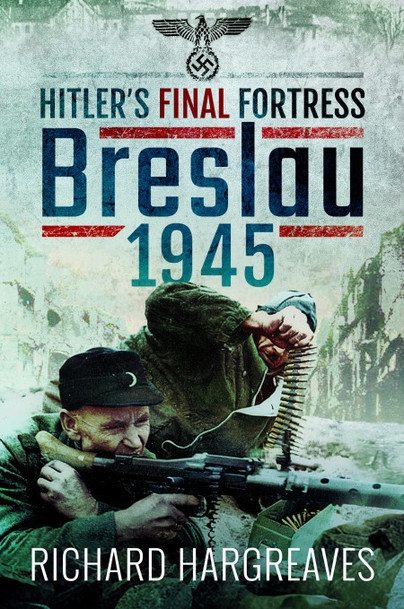| Title: | Hitler's Final Fortress - Breslau 1945 |
| Writer: | Hargreaves, R. |
| Published: | Pen & Sword |
| Published in: | 2019 |
| Pages: | 268 |
| Language: | English |
| ISBN: | 9781526739 |
| Description: | Festung Breslau was a fortress in the East of Germany that was surrounded by the Red Army towards the end of the Second World War and that kept holding out until after Adolf Hitler died. After the city surrendered to the Russians it was rebuilt, but not like a German city. Instead, the city arose as the Polish city Wroclaw. In this work, Richard Hargreaves writes about the experiences in this city during its besieging. In January 1945, Breslau was surrounded by the Russian troops. The city finally surrendered in May, 1945. Hargreaves makes use of various archives and doesn’t just report on the Siege of Breslau, but on the period prior as well. In the back of the book there’s a source reference list and after each chapter there’s a list of notes. Many of those involved get to talk about their experiences. The book is clearly written from a German perspective. It’s clear that Hargreaves researched many German and English sources and extensively used archive material for this book. The extent to which he holds himself accountable for his work is admirable and definitely lifts his book to higher level. Several pictures give an impression of how the fights went and how heated the battles were in Breslau during the final months of the war. Aside from personal accounts Hargreaves uses many types of information, like the weather in the city or the effect that the bombardments had. Hargreaves clearly conveys how fiercely they fought. A minor downside to the story is the number of people that are introduced in the book. Due to the large number of people that are introduced it’s not always clear who experienced what exactly, so some kind of reminder would have been helpful. The book also contains a number of maps at the very start, which would have been more suited at the relevant chapters in the book. The positions of the people that were in Breslau at the time are shown on the map as well. Although the maps are certainly useful, more could’ve been done with them. But none of these are major flaws. The sheer volume of information can be explained because Hargreaves is just extremely knowledgeable on this subject, which can be overwhelming to the reader. It must be pointed out that Holocaust denier David Irving’s work is mentioned amongst secondary literature. Why these publications are noted isn’t clear, but they don’t seem to directly affect the book. It’s also noticeable that the book is mostly written from a German perspective, which is why it reads like a tragedy. The Russian perspective is only marginally addressed. This can be partly explained by the sources used, such as the archive that was established at the time by Horst Gleiss, who, as a little boy, was forced to participate in the defence of Breslau. All in all, Richard Hargreaves has done thorough research for his book. As mentioned above, there are a few minor side notes to be made. Still, the author conveys the events during the Siege of Breslau very well. For those who are interested in the history of this lesser known aspect of the Second World War, this publication is certainly a recommendation. |
| Rating: |     Very good Very good |
Information
- Translated by:
- Frank Hermans
- Article by:
- Samuel de Korte
- Published on:
- 01-06-2019
- Feedback?
- Send it!
Images


